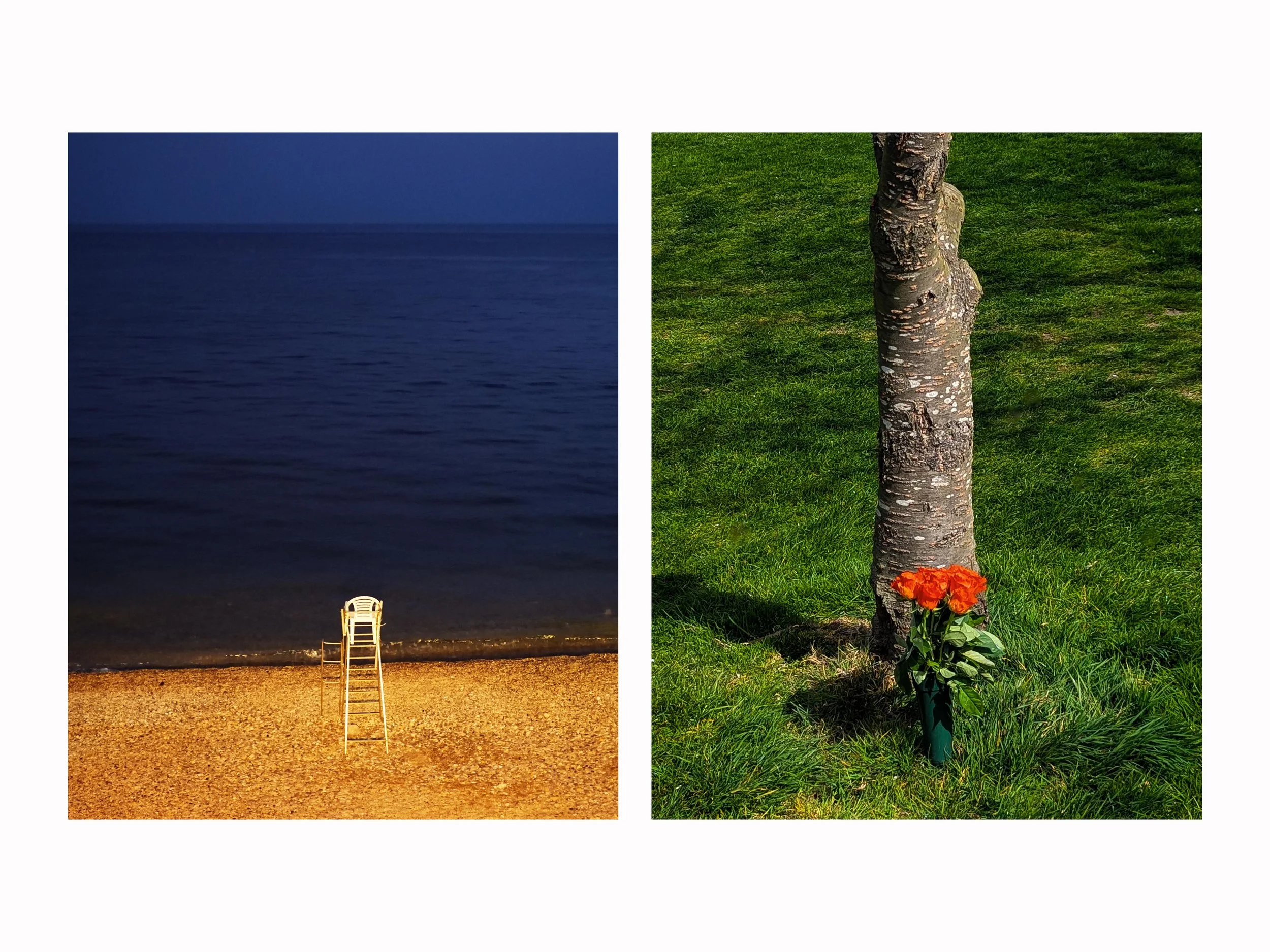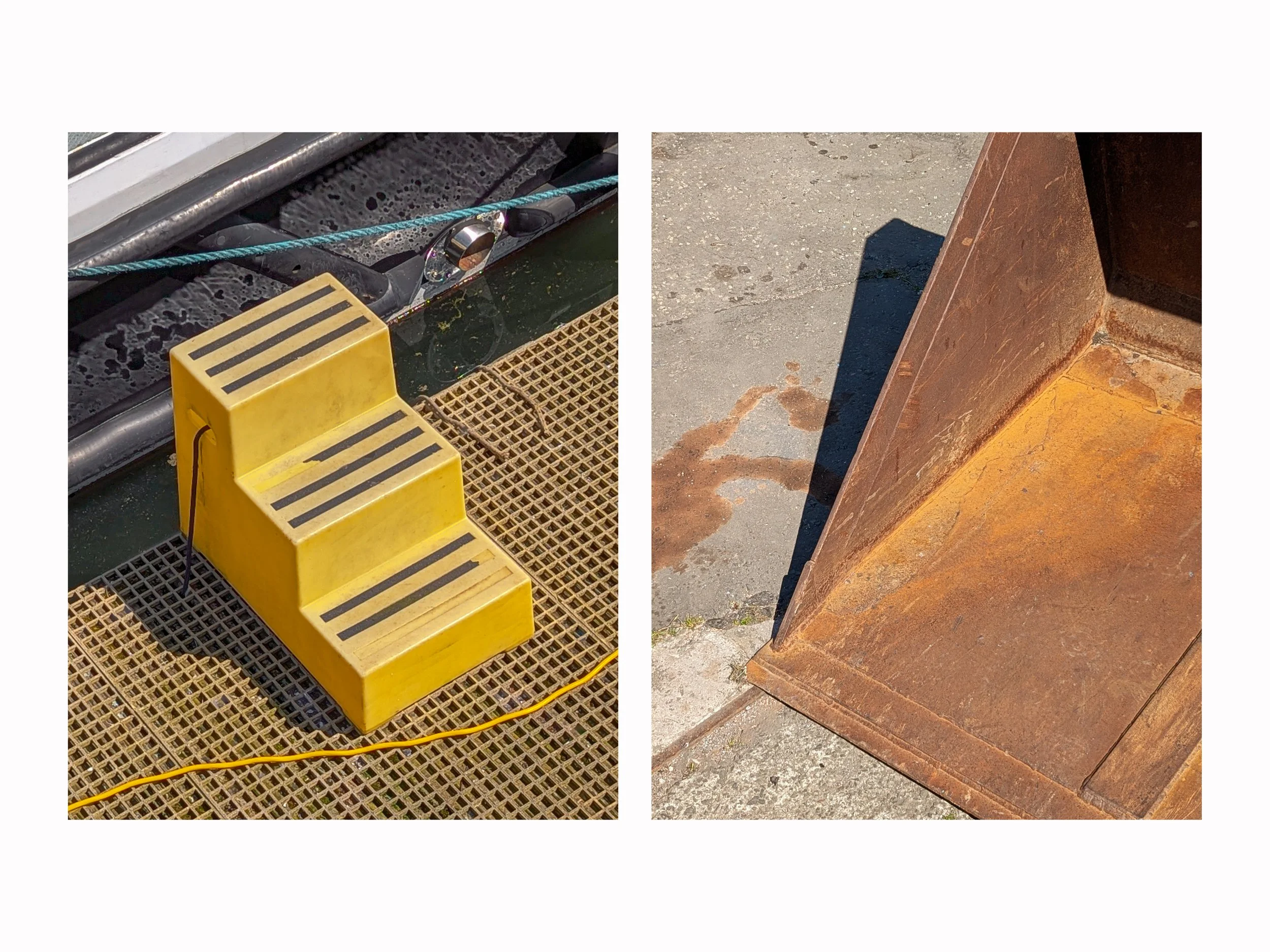Double Takes
Unexpected but connected: Double Takes pairs images to reveal the poetry of the everyday. Each pairing draws out subtle resonances or tensions, sometimes humorous and sometimes understated, where ordinary details shift in meaning when placed side by side.
A key aspect of Double Takes is that most of the images were taken using a mobile phone rather than a conventional professional camera. This choice is integral to the project’s spirit: everyday snapshots become worthy of attention; the ordinary gains depth and intensity through relation and resonance. In using mobile capture, the work aligns itself with broader debates in photography: not determined by the tool but by the act of seeing itself.¹
Photography’s history is a terrain of challenge: what subjects count and which tools make images that matter. In the mid-nineteenth century, pioneers such as Hippolyte Bayard and Henry Peach Robinson used direct positive printing and combination techniques to assert photography as art, not mere mechanical record.² Early twentieth-century Pictorialists blurred the line between photography and painting, emphasising mood, texture and manipulation over realism.³ Mid-twentieth-century artists like Walker Evans and Diane Arbus revealed the poetry and complexity of everyday life.⁴⁵ In the digital era, photographers such as Lucien Samaha explored the potential of early digital capture.⁶ In this lineage, Double Takes participates in the discourse of what photography can be, how accessible making art has become, and how meaning can emerge from the commonplace.
While Double Takes shares less of the site-specific and atmospheric focus of Intervals, and less of the travel-driven character of Spirit of Place, it complements them by focusing on relation, coincidence and contingency. Its images are drawn from streets, interiors, supermarkets, and public spaces, where significance emerges not from geography but from affinities of form, colour or gesture across two frames.
The project resonates with William Eggleston’s democratisation of subject matter, where the banal becomes photographically urgent⁷; with Martin Parr’s affectionate eye for contemporary absurdity⁸; with the vernacular embrace of Stephen Shore⁹; and with Walker Evans’s insistence on the poetic potential of documentary¹⁰. Beyond photography, Double Takes echoes Georges Perec’s prompt to “observe the infra-ordinary”¹¹ and aligns with Henri Lefebvre’s analyses of everyday life¹².
In this way, Double Takes becomes a theatre of noticing. It reminds us that significance often lies hidden in plain sight, waiting to be recognised in pairing, relation, and proximity.
-
Manovich, L. Photography’s New Medium: Mobile and Memory. (Hypothetical / contextual reference).
Bayard, H. & Robinson, H. P. (Early photographic printing and combination techniques).
Overview / texts on the Pictorialist movement.
Evans, W. American Photographs. New York: Museum of Modern Art, 1938.
Arbus, D. (Selected works on everyday life).
Samaha, L. (Digital era photography / early digital capture).
Eggleston, W. William Eggleston’s Guide. New York: Museum of Modern Art, 1976.
Parr, M. The Last Resort. Stockport: Dewi Lewis Publishing, 1986.
Shore, S. Uncommon Places: The Complete Works. New York: Aperture, 2004.
Evans, W. (Already cited - poetic documentary).
Perec, G. Species of Spaces and Other Pieces. London: Penguin, 1997.
Lefebvre, H. Critique of Everyday Life. London: Verso, 1991.





